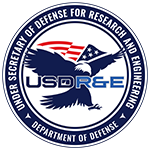DoD Adopts Standard for Human Readiness Levels
August 1, 2025
DoD Adopts Standard for Human Readiness Levels
August 1, 2025
First created by NASA in the 1970s, the Technology Readiness Level (TRL) – which measures the progress of new technology from basic research to completion – was formalized in 1989. TRLs track both commercial and government product development and is common terminology in aerospace and defense.
There has never been a similar measurement system for the Department of Defense (DoD) to evaluate technology readiness for humans.
“Until now, the Department has not been able to quantify and communicate a human systems integration maturity metric for DoD acquisition. This has been a critical gap in the human systems integration discipline essential to delivering our programs,” said Chris DeLuca, Director of Specialty Engineering in the Office of the Under Secretary of Defense for Research and Engineering’s Systems Engineering and Architecture.

The Department of Defense has officially adopted a human readiness standard to ensure mission-critical systems are not only technologically advanced but also ready for the people who use them.
“The scale validates technology is ready for our warfighters to use safely to support their mission success,” DeLuca said.
DeLuca’s team collaborated with the Human Factors Ergonomics Society to adopt the 400-2021 Human Readiness Levels (HRL) scale for the DoD. The scale evaluates, tracks, and communicates the readiness of a technology or system for safe and effective human use and can be applied in the context of existing systems engineering and human systems integration (HSI) processes during program development.
The HRL scale incorporates the human element of the system so issues such as weight, layout and form, can be captured and addressed as early as possible during design and development.
The U.S. Army has been forward leaning in applying HRLs to conduct development, test and evaluation and achieve HSI objectives. Pamela Savage-Knepshield, Ph.D., serves as senior human factors engineer and the HSI lead for the Army’s Program Executive Office for Command, Control, Communications and Network’s Product Manager Fire Support Command and Control. She told ALT Magazine she employs a user-centered design process that aligns with the HRL scale to bridge the gaps between the system and the user, which is foundational to making software work for soldiers.
By understanding the gaps between system and user, Savage-Knepshield said the Army discovers where software can be improved. “Soldiers who use software have a lot of information that they need to process very quickly. The simpler we can make the system, the less they actually have to remember how to use the system. They can focus on their job and not memorizing what the buttons mean.”
How are these HSI objectives achieved? While the traditional TRL scale focuses on technical maturity, the HRL scale emphasizes the readiness of a developing technology for safe and effective human use. Early and proactive attention to the human element in the system design process minimizes the cost and disruption associated with supporting human use, ultimately reducing human error in operational systems and promoting safe and effective human-system performance.
Progression through the HRL scale should mirror progression through the TRL scale. This minimizes program risks affecting cost, schedule, and performance, as well as risk to the system’s human users of fielding a technology that is not ready for human use.
Learn More
To learn more, see the human readiness standard for free here. Let’s build systems that work for people—because human readiness is mission readiness!
HFES
Human Factors and Ergonomics Society Standard
Contact SE&A
SE&A: osd-sea@mail.mil | Attn: “Specialty Engineering – HSI”
Office of the Under Secretary of War,
Research and Engineering (OUSW(R&E))
3030 Defense Pentagon, Washington, DC 20301-3030
Contact Us
Contact Us
Information for the USD(R&E):
Contact OUSD(R&E) Staff
For website issues: Contact Webmaster

